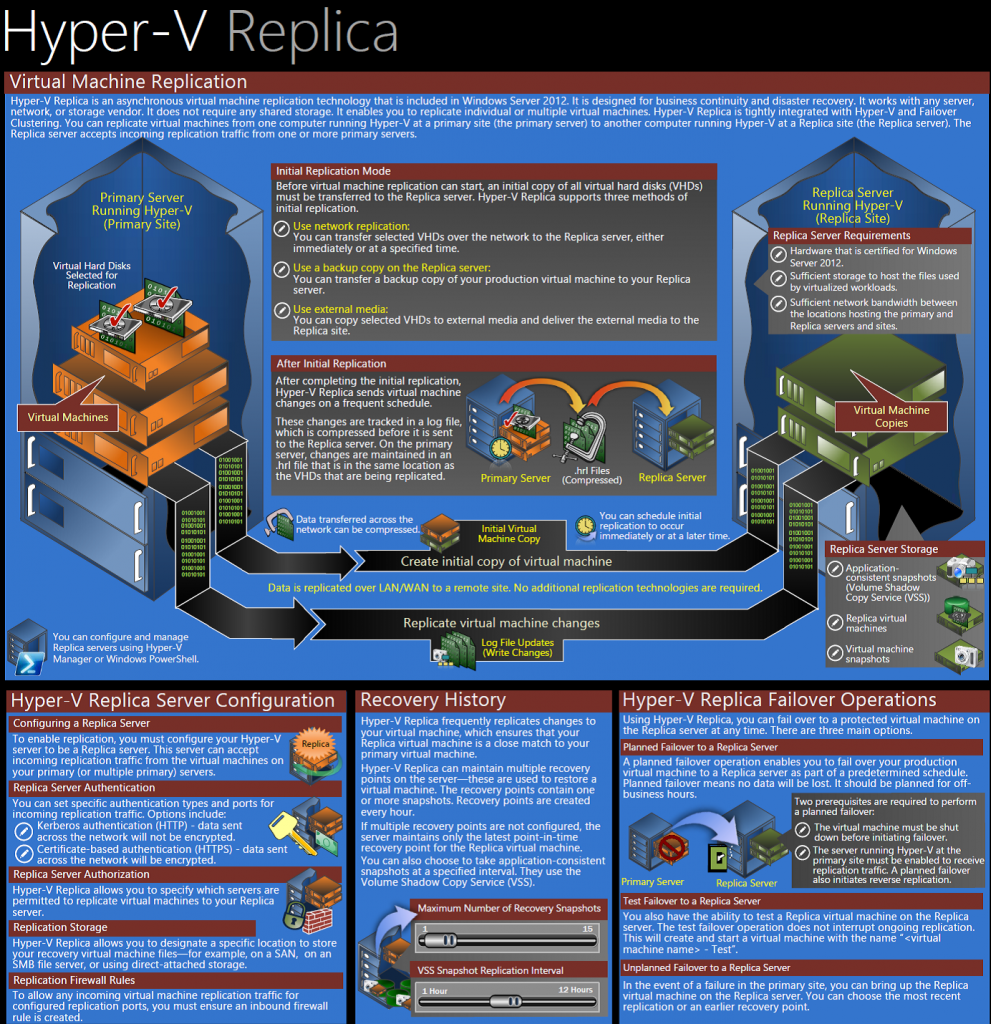Hyper-V Replicas – Feature rich, yet insanely simple
I have been working with Hyper-V for a while now and while I think overall it has just the right feature set to create a dent in the virtualization space, I was particularly impressed with the Hyper-V replica feature. Replication is a complex concept and Hyper-V 2012 replica achieved what most products strive for – a high level of simplicity while delivering a comprehensive and feature rich application. Replication gets particularly tricky on primary storage when mission critical applications like Microsoft Exchange and SQL Server are involved. The replication process has to be non-intrusive on the source hypervisor while maintaining application consistency during replication to the target hypervisor. This operation is further complicated with unreliable and slow WAN links between the source and the host.
Hyper-V 2012 replica is a feature which delivers asynchronous replication of virtual machine data from one site to another. Hyper-V 2012 replica is agnostic of the underlying storage, network or server make and model, which makes it extremely flexible to deploy. Since Hyper-V replica operates at the block level of the virtual machine, in the event of an outage at the primary site, the virtual machines at the replication site can be immediately powered on. Most storage vendors offer replication (typically for an additional license fee), but run into the following problems:
- They are agnostic of the applications that use the storage, causing the application data to be inconsistent at the replication target.
- If there is logical corruption at the source, the corruption is replicated to the target. Oftentimes storage based replication, does not have the provision to maintain multiple recovery points at the target.
Hyper-V 2012 replica addresses both the above concerns. Since it runs agnostic of hardware, it is inherently integrated with VSS (Volume Shadow copy Service) running on the host as well as in the guest operating system, ensuring consistency of application data on the replication target. Secondly, it has the provision of maintaining configurable recovery points, which are snapshots in time of the virtual machine data that allow a user to spin-up a virtual machine at the target at a point before the occurrence of the corruption. For a business which is planning to virtualize their infrastructure, Hyper-V replica brings a very cost effective way to have high-availability and offsite spin-up.
But Hyper-V replica did not stop there. The team at Microsoft realizes that not all networks for replication are high speed reliable networks. They understand that in the mid-market, customers are going to have T1 and T3 connections to their target site and the initial transfer of data to the target could take weeks or months. Hyper-V replica has the ability to seed the initial data using an external drive which greatly helps speed up the initial transfer of replication data. With planned and unplanned failover and failback capabilities, Hyper-V replicas offer a robust feature set for high availability.
The following picture explains Hyper-V replicas at an architectural level.

[Source: Microsoft ]
Talking about great Hyper-V resources, Aidan Finn, a well-respected industry expert and MVP, recently released a book on Hyper-V 2012 configuration and installation that covers Hyper-V replicas. You can find it here.

